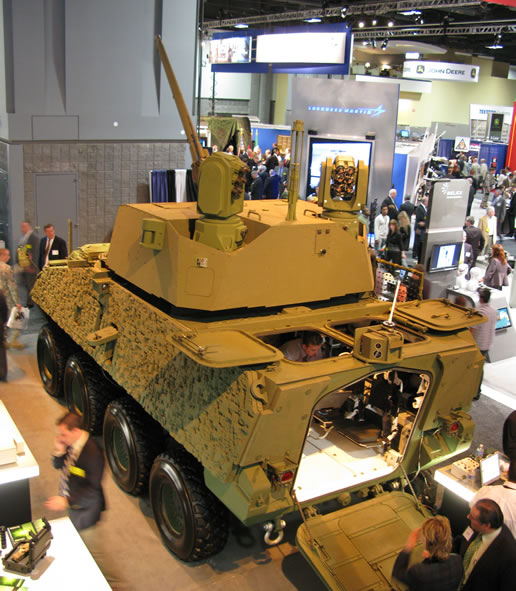
What began as an ambitious vision in the minds of Army leaders in 1999 – to build a medium-class armored vehicle able to deploy quickly, transport troops safely, and bring agility and lethality across multiple platforms – has evolved into the battle-tested Stryker vehicle now celebrating its 10-year anniversary.

“Stryker really filled an interesting niche because the heavy forces were too difficult to deploy in certain austere environments,” Scott Davis, program executive officer, Ground Combat Systems, said. “But it wasn’t just the vehicles. The Army benefited greatly from the concept of putting multiple mission packages on a common platform.” Davis, who previously served as a deputy project manager with the Stryker program, said the Stryker’s mobility gives the warfighter an advantage. “The wheeled system is cheaper to operate and its sheer speed down the main supply routes has allowed it to perform escort roles and some patrolling roles that would have been very difficult to do with a tracked ground vehicle,” Davis said.

“Modularity was really the Army’s vision that Secretary Shinseki championed, ” said Maj. Gen. Robert Brown, commanding general, Maneuver Center of Excellence, Fort Benning, Ga. “The Army needed a force that was versatile, flexible, digitally capable and networked. The force needed to be packaged on a platform that increased mobility and could be rapidly deployed. The end result of this vision was the Army’s Stryker Brigade Combat Team,” Brown told an enthusiastic crowd. “This vision saved hundreds of my Soldiers’ lives in combat,” Brown added, referring to his years as a Stryker Brigade Combat Team commander. Brown said the Stryker vehicles under his command withstood a full range of enemy attacks to include rockets, small arms fire and improvised explosive devices.
The Stryker vehicle, combat proven in Iraq and Afghanistan, has now logged more than 27 million combat miles with operational readiness rates greater than 96 percent, said Col. Robert Schumitz, Stryker project manager.



















